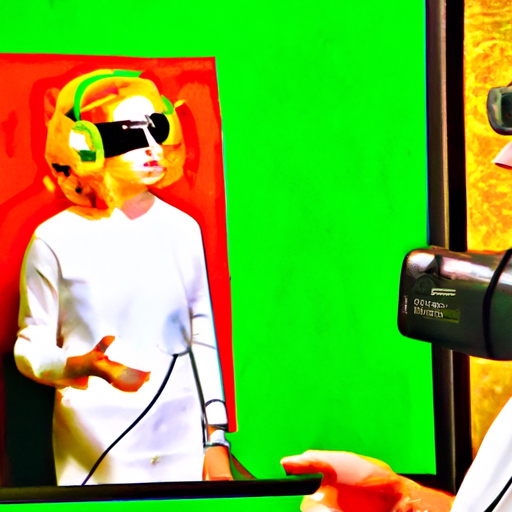-
Table of Contents
- Creating Graphics for Virtual Reality Experiences
- The Importance of Graphics in Virtual Reality
- Best Practices for Creating VR Graphics
- 1. Understand the VR Platform
- 2. Optimize for Performance
- 3. Pay Attention to Scale and Proportions
- 4. Use High-Quality Textures and Lighting
- 5. Test and Iterate
- Case Studies: Successful VR Graphics
- 1. “Half-Life: Alyx” by Valve
- 2. “Tilt Brush” by Google
- Conclusion
Creating Graphics for Virtual Reality Experiences
Virtual reality (VR) has emerged as a powerful technology that has the potential to revolutionize various industries, including gaming, entertainment, education, and healthcare. As the demand for immersive VR experiences continues to grow, the importance of creating high-quality graphics for these experiences cannot be overstated. In this article, we will explore the key considerations and best practices for creating graphics that enhance the virtual reality experience.
The Importance of Graphics in Virtual Reality
Graphics play a crucial role in creating a realistic and immersive virtual reality experience. Unlike traditional 2D graphics, VR graphics need to account for the user’s perspective and provide a sense of depth and scale. The quality of the graphics directly impacts the user’s level of immersion and engagement with the virtual environment.
When designing graphics for VR, it is essential to consider the following factors:
- Resolution: VR headsets have different display resolutions, and creating graphics that can take full advantage of these resolutions is crucial. Higher resolutions result in sharper and more detailed visuals, enhancing the overall experience.
- Frame Rate: Maintaining a high frame rate is essential in VR to prevent motion sickness and ensure a smooth experience. Graphics should be optimized to run at a consistent frame rate, typically 90 frames per second (FPS) or higher.
- Realism: Realistic graphics are key to creating an immersive VR experience. Textures, lighting, and shading should be carefully designed to mimic real-world environments and objects.
- Performance: VR experiences require significant computational power. Optimizing graphics for performance is crucial to ensure smooth gameplay and prevent lag or stuttering.
Best Practices for Creating VR Graphics
Creating graphics for virtual reality requires a different approach compared to traditional game or application development. Here are some best practices to consider:
1. Understand the VR Platform
Before diving into graphic design, it is essential to understand the capabilities and limitations of the target VR platform. Different VR headsets have varying display resolutions, field of view, and processing power. By understanding these specifications, designers can optimize graphics to deliver the best possible experience on a specific platform.
2. Optimize for Performance
Performance optimization is crucial in VR to ensure a smooth and comfortable experience for users. To optimize graphics for performance:
- Use efficient rendering techniques such as level of detail (LOD) systems to reduce the number of polygons rendered at a time.
- Implement occlusion culling to avoid rendering objects that are not visible to the user.
- Utilize texture compression algorithms to reduce memory usage without sacrificing visual quality.
3. Pay Attention to Scale and Proportions
In VR, users have a sense of depth and scale, making it crucial to pay attention to the size and proportions of objects in the virtual environment. Objects should be designed to match real-world scale to create a more realistic experience. For example, a door should be tall enough for a user to walk through comfortably.
4. Use High-Quality Textures and Lighting
High-quality textures and lighting can significantly enhance the realism of VR graphics. By using high-resolution textures and realistic lighting techniques, designers can create visually stunning environments that immerse users in the virtual world. Additionally, dynamic lighting can add depth and realism to the virtual environment.
5. Test and Iterate
Testing and iteration are crucial in the development of VR graphics. Designers should regularly test their graphics on different VR headsets to ensure compatibility and performance. User feedback should be collected and used to iterate and improve the graphics to provide the best possible experience.
Case Studies: Successful VR Graphics
Several companies have successfully created compelling VR graphics that enhance the overall virtual reality experience. Let’s explore a few notable case studies:
1. “Half-Life: Alyx” by Valve
“Half-Life: Alyx” is a highly acclaimed VR game developed by Valve. The game features stunning graphics that push the boundaries of VR visuals. Valve utilized advanced rendering techniques, high-resolution textures, and realistic lighting to create a visually immersive experience. The attention to detail in the graphics contributes to the game’s overall success and positive reception from players.
2. “Tilt Brush” by Google
“Tilt Brush” is a VR painting application developed by Google. The application allows users to create artwork in a three-dimensional space. The graphics in “Tilt Brush” are designed to be vibrant, responsive, and visually appealing. The use of dynamic lighting and particle effects adds depth and realism to the virtual painting experience, making it a popular choice among VR enthusiasts and artists.
Conclusion
Creating graphics for virtual reality experiences requires careful consideration of resolution, frame rate, realism, and performance. By understanding the capabilities of the VR platform, optimizing for performance, paying attention to scale and proportions, using high-quality textures and lighting, and testing and iterating, designers can create visually stunning and immersive VR graphics.
Successful case studies like “Half-Life: Alyx” and “Tilt Brush” demonstrate the impact of high-quality graphics on the overall VR experience. As VR technology continues to evolve, the importance of graphics in creating compelling and immersive virtual reality experiences will only increase. By following best practices and leveraging the latest advancements in graphics technology, designers can push the boundaries of VR graphics and deliver truly transformative experiences for users.
